| Back to Back Issues Page |
 |
|
Dallying In The Dirt, Issue #121 --- Paperwhites are now filling the house with bloom and fragrance December 23, 2012 |
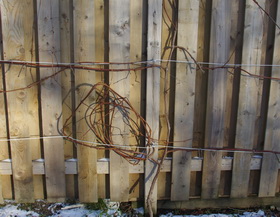
There’s just time to squeeze in one last edition of “Dallying In The Dirt” before everybody takes a holiday. Thanks to an extended warm autumn and a distinct lack of the ingredients for a white Christmas, I have managed to finally get the garden reasonably ready for winter. Yes, there are a few perennials that will be tidied up in the spring and the Crab Apple over the ponds will get pruned on a nice sunny winter’s day. Those ponds have shown little sign of freezing as yet and so the bubblers are still in the basement. I always seem to be chopping holes in the ice to install them anyway. The monstrous growth that the Grape vines produced this year will also get severely pruned on a nice winter’s day. My dream of making grape vine wreaths may yet get realized but not in time for this Christmas. The snowblower has been tuned and tested and had its tires inflated and my skis have been waxed and tuned. Bring on the white stuff. 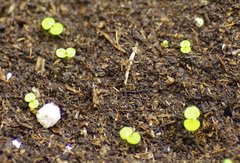 A week or so ago I went to the basement and turned on the heating cable in the propagation bed and plugged those lights into the timers. Then I took my package of Begonia boliviensis seeds and carefully sowed them on some fine sterile soil mix. These particular seeds were a little easier to deal with than most
Begonia seed because they were coated, making them much larger and easier to see and spread. A very light coating of planting medium was sprinkled over the top of them with my well used kitchen sieve and then they were put in a dish of water until their entire container of soil wicks up enough water to become throughly moist. When the soil is that moist I can just put a clear plastic cover over the top and never have to supply water again until after they have germinated. They have started to do just that. Several very fine pairs of leaves have emerged from the soil in the last couple of days and have engendered great excitement. It is obvious from their tiny size, why we have to start them so early if we expect to have decent sized transplants by the middle of May. So far so good. I’m anxious to see how many germinate and how many I can successfully transplant to individual pots to grow on for the rest of the winter. Can anything that starts out so tiny actually fill my garage wall containers with blooms all summer?
A week or so ago I went to the basement and turned on the heating cable in the propagation bed and plugged those lights into the timers. Then I took my package of Begonia boliviensis seeds and carefully sowed them on some fine sterile soil mix. These particular seeds were a little easier to deal with than most
Begonia seed because they were coated, making them much larger and easier to see and spread. A very light coating of planting medium was sprinkled over the top of them with my well used kitchen sieve and then they were put in a dish of water until their entire container of soil wicks up enough water to become throughly moist. When the soil is that moist I can just put a clear plastic cover over the top and never have to supply water again until after they have germinated. They have started to do just that. Several very fine pairs of leaves have emerged from the soil in the last couple of days and have engendered great excitement. It is obvious from their tiny size, why we have to start them so early if we expect to have decent sized transplants by the middle of May. So far so good. I’m anxious to see how many germinate and how many I can successfully transplant to individual pots to grow on for the rest of the winter. Can anything that starts out so tiny actually fill my garage wall containers with blooms all summer? 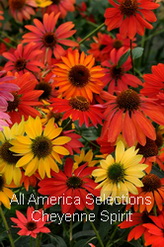 Several seed catalogues have found their way into my mail box and I can’t resist looking at the first few pages to see what is new for next summer. It is truly difficult to follow my resolution to make the garden a little smaller and less time and effort intensive, when I discover all the wonderful new plants that I really “must” try. The email inbox also fills with press releases about a wide variety of plant introductions. I do pay special attention to news from trialing operations such as the highly regarded All America Awards. They trial new varieties in many different locations in N. America to see how they perform in a wide variety of conditions. I get excited about such things as Jasper, a new cherry Tomato from Johnny’s that received a coveted All America Award this year. Echinacea “Cheyenne Spirit” that blooms first year from seed with a range of colours also took an award and looks very interesting.
Several seed catalogues have found their way into my mail box and I can’t resist looking at the first few pages to see what is new for next summer. It is truly difficult to follow my resolution to make the garden a little smaller and less time and effort intensive, when I discover all the wonderful new plants that I really “must” try. The email inbox also fills with press releases about a wide variety of plant introductions. I do pay special attention to news from trialing operations such as the highly regarded All America Awards. They trial new varieties in many different locations in N. America to see how they perform in a wide variety of conditions. I get excited about such things as Jasper, a new cherry Tomato from Johnny’s that received a coveted All America Award this year. Echinacea “Cheyenne Spirit” that blooms first year from seed with a range of colours also took an award and looks very interesting.
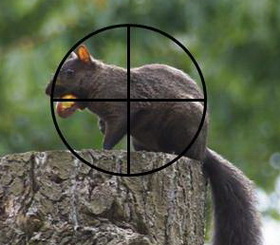 I did not enjoy emptying my rain barrels these last few days. I should have done it sooner but the weather stayed so warm. I spread all the water over my beds, especially those containing evergreens or newly planted bulbs. That’s where the great unhappiness comes in. The beds that had the 650 newly, and painfully, planted tulips look more and more like the bomb range at the local military base. Crater sized holes are everywhere and I have this horrible feeling that if I counted them I would come up with a number close to 650. I know I complained about the voracious appetites of the bushy tailed tree rats, in the last issue but the damage keeps on growing despite my best efforts to stop them. I really can’t sit out there 24 hours a day to protect my Tulips. Last year all of the new Tulips were left undisturbed so why are the squirrels so hungry this fall?
I did not enjoy emptying my rain barrels these last few days. I should have done it sooner but the weather stayed so warm. I spread all the water over my beds, especially those containing evergreens or newly planted bulbs. That’s where the great unhappiness comes in. The beds that had the 650 newly, and painfully, planted tulips look more and more like the bomb range at the local military base. Crater sized holes are everywhere and I have this horrible feeling that if I counted them I would come up with a number close to 650. I know I complained about the voracious appetites of the bushy tailed tree rats, in the last issue but the damage keeps on growing despite my best efforts to stop them. I really can’t sit out there 24 hours a day to protect my Tulips. Last year all of the new Tulips were left undisturbed so why are the squirrels so hungry this fall?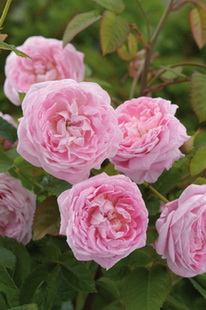 I like to pass on good news and great offers to my readers and I received one this week. David Austin Roses just sent me a colourful press release showcasing all the new 2013 varieties that I will not have room for. The famous Shropshire, England rose breeder is introducing six exquisite new English Rose varieties to North America such as Queen Anne. The six varieties – deliciously fragrant and robust, season-long repeat bloomers -- are available by mail order from David Austin Roses In addition they have a wonderful 120 page book/catalogue of their Roses that is free to anyone interested in these delightful flowers. Just follow the link above and let them know that you would like one. I’ve already ordered mine and maybe a few Roses will just happen to appear as well.
I like to pass on good news and great offers to my readers and I received one this week. David Austin Roses just sent me a colourful press release showcasing all the new 2013 varieties that I will not have room for. The famous Shropshire, England rose breeder is introducing six exquisite new English Rose varieties to North America such as Queen Anne. The six varieties – deliciously fragrant and robust, season-long repeat bloomers -- are available by mail order from David Austin Roses In addition they have a wonderful 120 page book/catalogue of their Roses that is free to anyone interested in these delightful flowers. Just follow the link above and let them know that you would like one. I’ve already ordered mine and maybe a few Roses will just happen to appear as well.Time to answer a few questions. If you have a gardening question just ‘reply’ to this newsletter and send me your query. I try to answer most of the questions and the ones that I answer here are those that I think will have the widest interest. You can also find the latest garden updates on the front page of gardening-enjoyed.com. |
| Back to Back Issues Page |
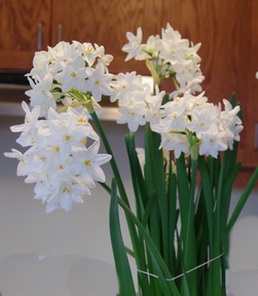 In the basement, gardening continues unabated. Many of the
In the basement, gardening continues unabated. Many of the